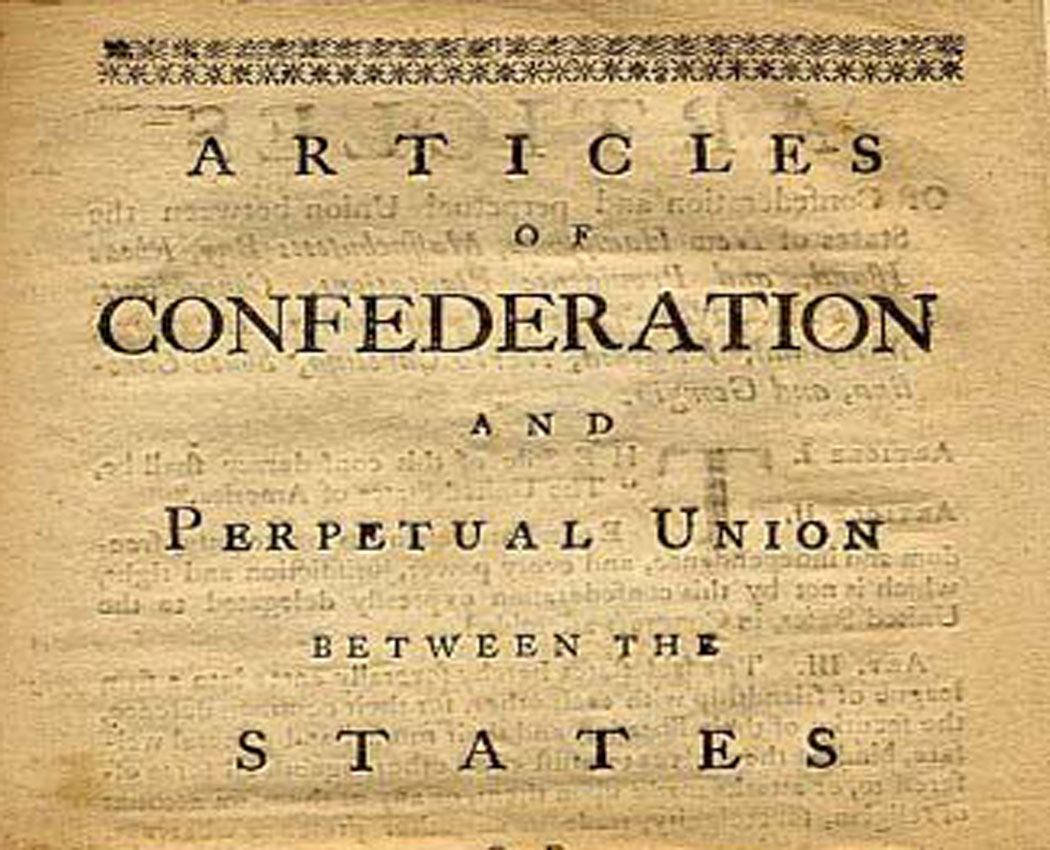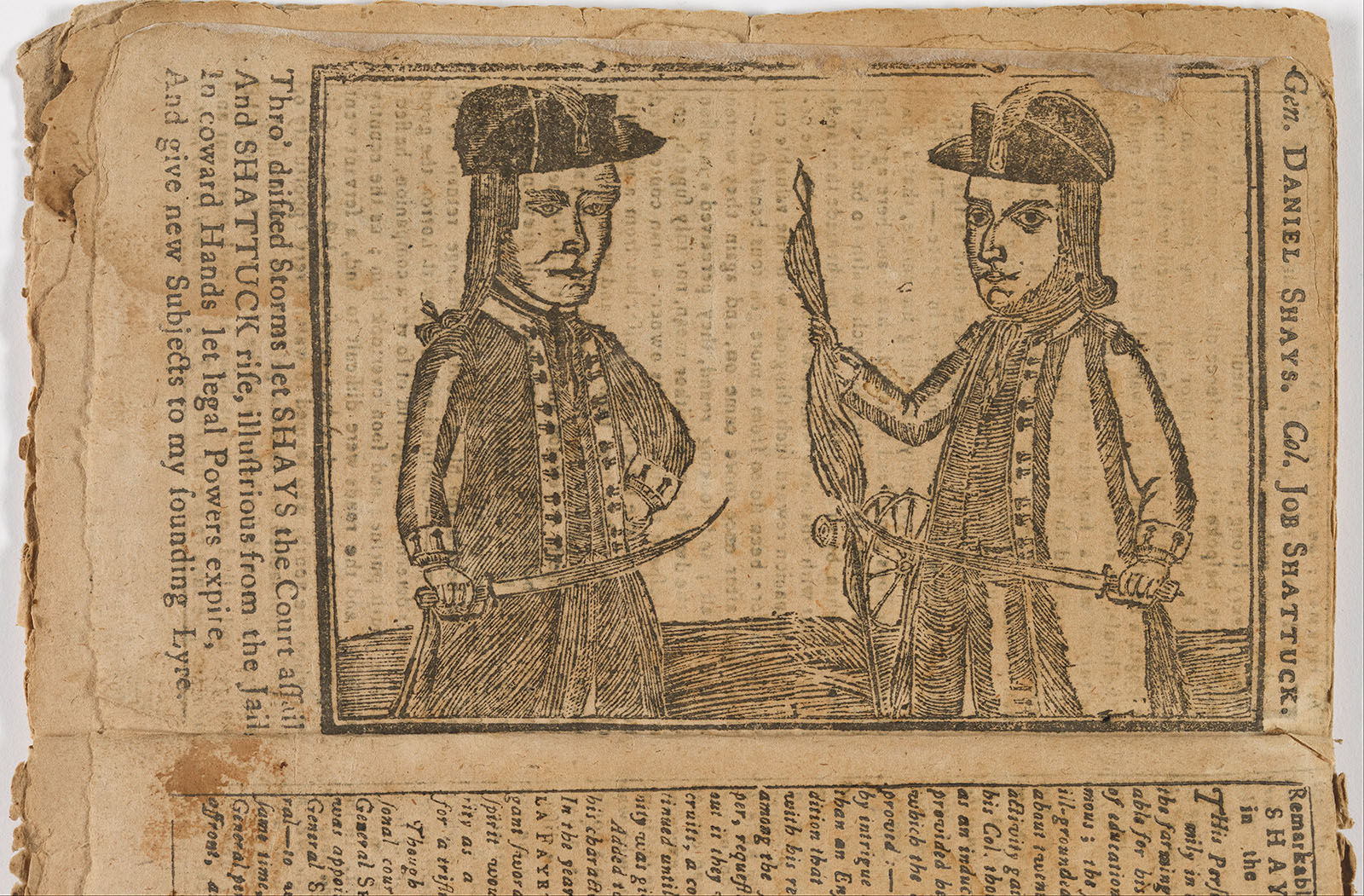
After the United States won the American Revolution and gained independence from Great Britain, the new nation was faced with the task of creating a government to replace the British colonial government that had previously controlled the colonies.
So what kind of laws did the U.S. have before the Constitution? After declaring independence from Britain, the Second Continental Congress asked each state to create its own state constitution. The states would write laws that reflected the new ideas of democracy.
The newly written laws would include bills of rights and yearly elections of legislators and weak executive branches. Massachusetts drafted its constitution and then submitted it to the people for ratification. This would later be copied in ratifying the national Constitution.
Just before the Declaration of Independence in 1776, a committee from the Second Continental Congress wrote a set of laws called the Articles of Confederation . These articles were the first constitution of the United States, and they established a loose confederation of states with a weak central government . The central government was given only limited powers, such as the power to conduct foreign relations and regulate trade between the states. Each state retained most of its power, and the central government could not tax or regulate commerce.

The government under the Articles of Confederation proved to be ineffective in many ways, and it was soon clear that a new government needed to be established. Be sure to be familiar with the weaknesses of the Articles of Confederation:
| Weaknesses | Outcome |
| Congress had no power to levy or collect taxes | The government was always short of money |
| Congress had no power to regulate foreign trade | Quarrels broke out among states and trading with other countries was difficult |
| Congress had no power to enforce laws | The government depended on the states for law enforcement |
| Approval of 9/13 states was needed to enact laws | It was difficult to enact laws because of disagreements among the states |
| 13/13 states needed to approve amendments to the Articles | There was no practical way to change or amend the powers of the government when problems arose |
| The government had no executive branch, reflecting colonial suspicions of tyranny and federal authority. | There was no effective way to coordinate the work of the government |
| There was no national court system | The central government had no way to settle disputes among the states. |
Although there were many weaknesses of the Articles, there were two strengths. Congress placed newly acquired western lands under its control for the benefit of all states:
Shay's Rebellion was a series of armed protests that occurred in Massachusetts between 1786 and 1787, led by a veteran of the Revolutionary War, Daniel Shays . The rebellion was sparked by economic grievances, particularly by the heavy debt and high taxes faced by farmers and smallholders in the state.

Daniel Shays became a divisive figure, to some a violent rebel seeking to upend the new American government, to others an upholder of the true revolutionary virtues Shays and others fought for. This contemporary depiction of Shays and his accomplice Job Shattuck portrays them in the latter light as rising “illustrious from the Jail.” Unidentified artist, Daniel Shays and Job Shattuck, 1787. Image Courtesy of Wikimedia
After the Revolutionary War, many soldiers returned to their farms to find that they had fallen into debt and were facing foreclosures and seizures of their property. At the same time, the state government of Massachusetts was struggling financially and had imposed high taxes to pay off its war debt. The combination of these factors created a sense of frustration and anger among many farmers and smallholders, who felt that they were being treated unfairly by the government.
Daniel Shays, a veteran of the Revolutionary War who had been discharged without pay, became the leader of the rebellion. He organized a group of several hundred men, mostly farmers, who began to protest and march on courthouses and other government buildings to demand debt relief and the abolition of high taxes. They also sought to close the courts in order to prevent foreclosures and evictions.
The rebellion reached its peak in January and February 1787, when Shays and his men attacked the federal armory at Springfield and attempted to seize weapons. The rebellion was eventually put down by the state militia and private citizens with support from the federal government, with the assistance of the governor, some leaders of the rebellion were captured and put on trial, but most were acquitted or received pardons.
Shays' rebellion revealed the weakness of the government under the Articles of Confederation and showed the need for a stronger federal government, it also made it clear that the government needed to address the economic grievances of its citizens and provide relief to those who had fallen into debt and poverty after the war. This event also contributed to the call for a new Constitution, which would provide for a stronger central government, better able to address economic grievances, maintain order and protect the rights of all citizens.
Perhaps no document has shaped the United States more than the U.S. Constitution, and the U.S. Constitution probably wouldn't have been developed had it not been for Shays' rebellion.
Amendments to the Articles : These were changes made to the original Articles of Confederation, which was the first constitution of the United States. The amendments aimed at addressing weaknesses in the original document.
Approval for Enactment of Laws : This refers to the process where proposed bills must be approved by both houses of Congress (the House of Representatives & Senate) before being sent to the President for final approval or veto.
Articles of Confederation : The Articles of Confederation was the first constitution of the United States, adopted by Congress in 1777 and ratified by the states in 1781. It established a weak central government that had limited power over the states.
Central Government : Central Government refers to the national government which holds supreme power in a nation. In the U.S., it's responsible for national defense, foreign policy, and regulating interstate trade.
Collect Taxes : The process of gathering or accumulating taxes from citizens by a governing authority.
Congress : The national legislative body of U.S., consisting of two houses: Senate and House of Representatives.
Daniel Shays : Daniel Shays was a farmer and Revolutionary War veteran who led an uprising in Massachusetts known as Shays' Rebellion from 1786 to 1787. The rebellion was against high taxes, political corruption, and economic policies that were perceived as unjust.
Declaration of Independence : The Declaration of Independence is a document adopted by the Second Continental Congress on July 4th, 1776. It announced that thirteen American colonies were no longer under British rule and were now independent states.
Enforce Laws : This is the process by which governmental authorities ensure compliance with legal rules, regulations, standards, and norms.
Foreign Relations : Foreign relations refer to the interactions between countries, including all types of actions, communications, and dealings. This can involve diplomacy, trade agreements, treaties, wars, and international aid.
Job Shattuck : Job Shattuck was one of the leaders in Shays’ Rebellion. As a farmer and former soldier himself, he represented discontented farmers in Groton, Massachusetts.
Land Ordinance of 1785 : This was a law passed by Congress under The Articles that set up a system for surveying and selling western lands.
Levy Taxes : The act of imposing or charging taxes on citizens by a governing authority to fund public services and goods.
Massachusetts Constitution : Adopted in 1780, it's still active today making it oldest functioning written constitution in continuous effect worldwide; it served as model for US Constitution later on.
Northwest Ordinance of 1787 : This was an act passed by Congress under the Articles of Confederation that created a system for admitting new states into the Union from the territory north and west of Ohio River.
Public Funding of Schools : This refers to the financial support provided by federal, state, and local governments to public schools for their operation and maintenance.
Regulate Foreign Trade : This refers to the government's role in controlling and managing international commerce, including setting tariffs, quotas, and other trade policies.
Regulate Trade : To regulate trade means that the government sets rules for how business is conducted across borders. These rules can include tariffs on imported goods, quotas on certain products, and standards for safety and quality.
Revolutionary War Veterans : These are individuals who served in the American Revolutionary War, fighting for independence from British rule. After the war, many faced economic hardships and political marginalization.
Second Continental Congress : The Second Continental Congress was a convention of delegates from the Thirteen Colonies that started meeting in 1775, during the American Revolution. It eventually declared independence as the United States.
Shay's Rebellion : An uprising led by former Revolutionary War captain Daniel Shays in Massachusetts between 1786-1787, protesting against high taxes and stringent economic conditions.
Springfield Armory : The Springfield Armory was a primary center for the manufacture of U.S. military firearms from 1777 until its closing in 1968. It played a crucial role in producing weapons for the American forces during several major wars.
State Constitutions : These are the governing documents of each U.S. state, outlining the structure and function of their government.
Strengths of the Articles : These refer to aspects or provisions within The Articles of Confederation that worked well or had positive effects on governance during their implementation period.
U.S Constitution : The U.S Constitution is a document that outlines America's system of government and fundamental laws, guaranteeing certain basic rights to its citizens. It was signed on September 17, 1787.
Weaknesses of the Articles : The weaknesses of the Articles refer to the problems with the first constitution of the United States, known as the Articles of Confederation. These issues included a lack of central authority, inability to levy taxes or regulate trade, and difficulty in passing laws.